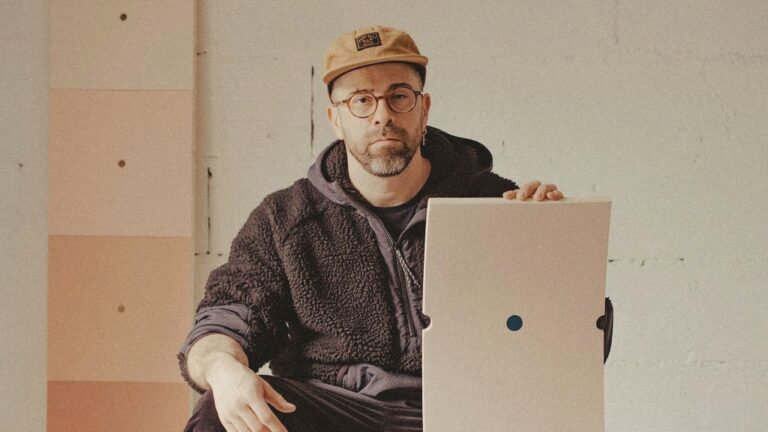
A Conversation with Alejandro Javaloyas
A Studio Visit During the La BIBI Residency
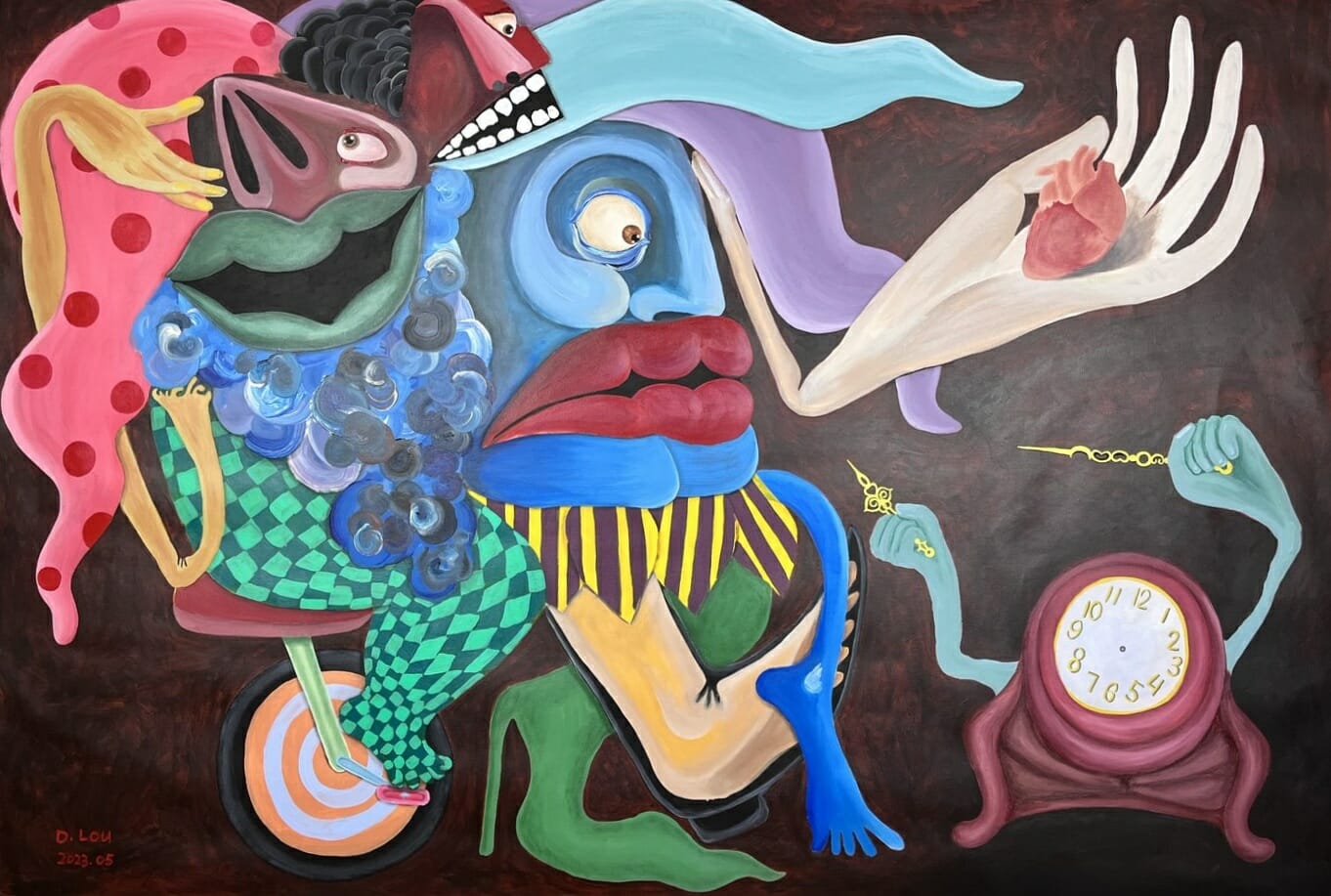
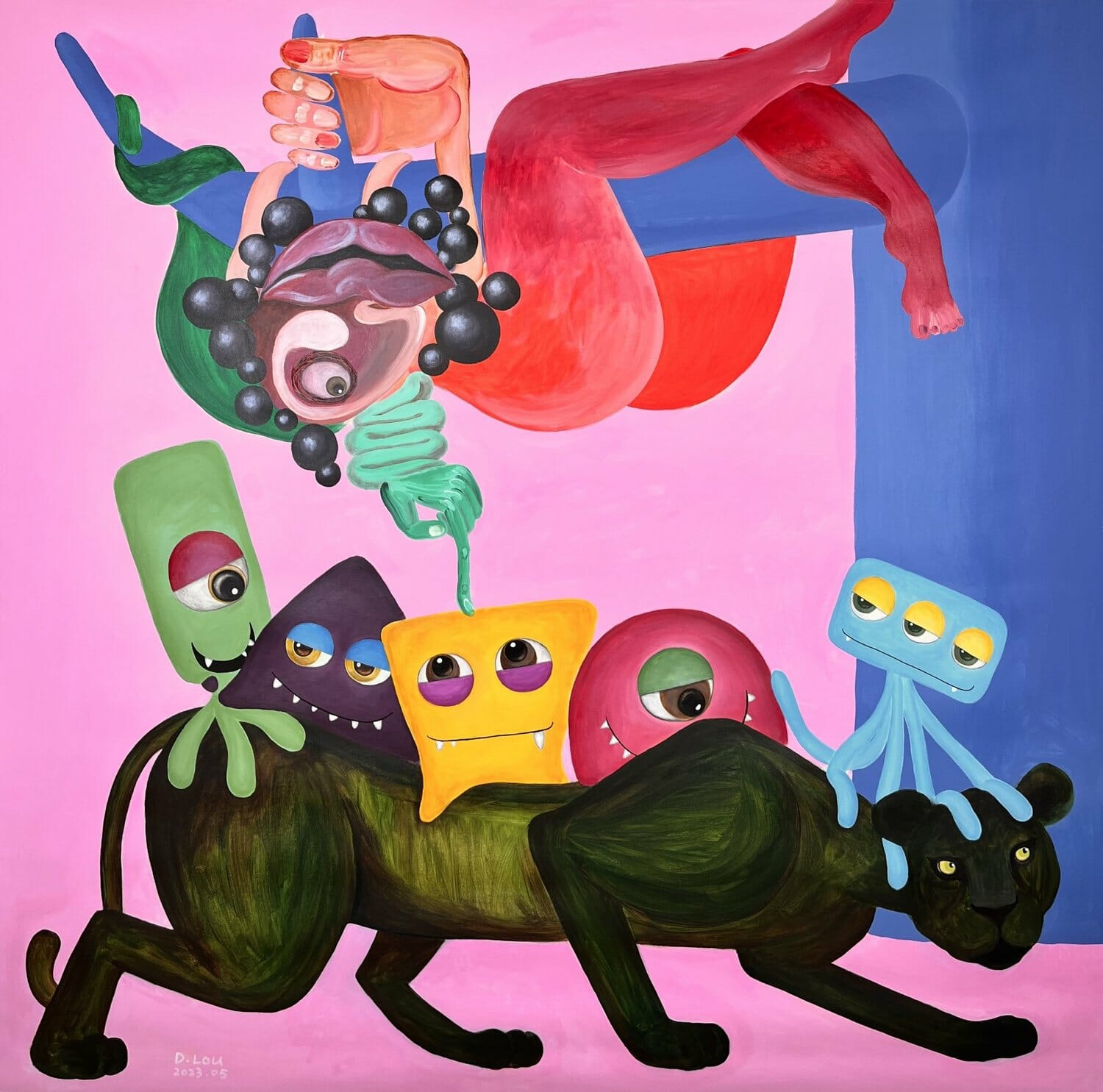
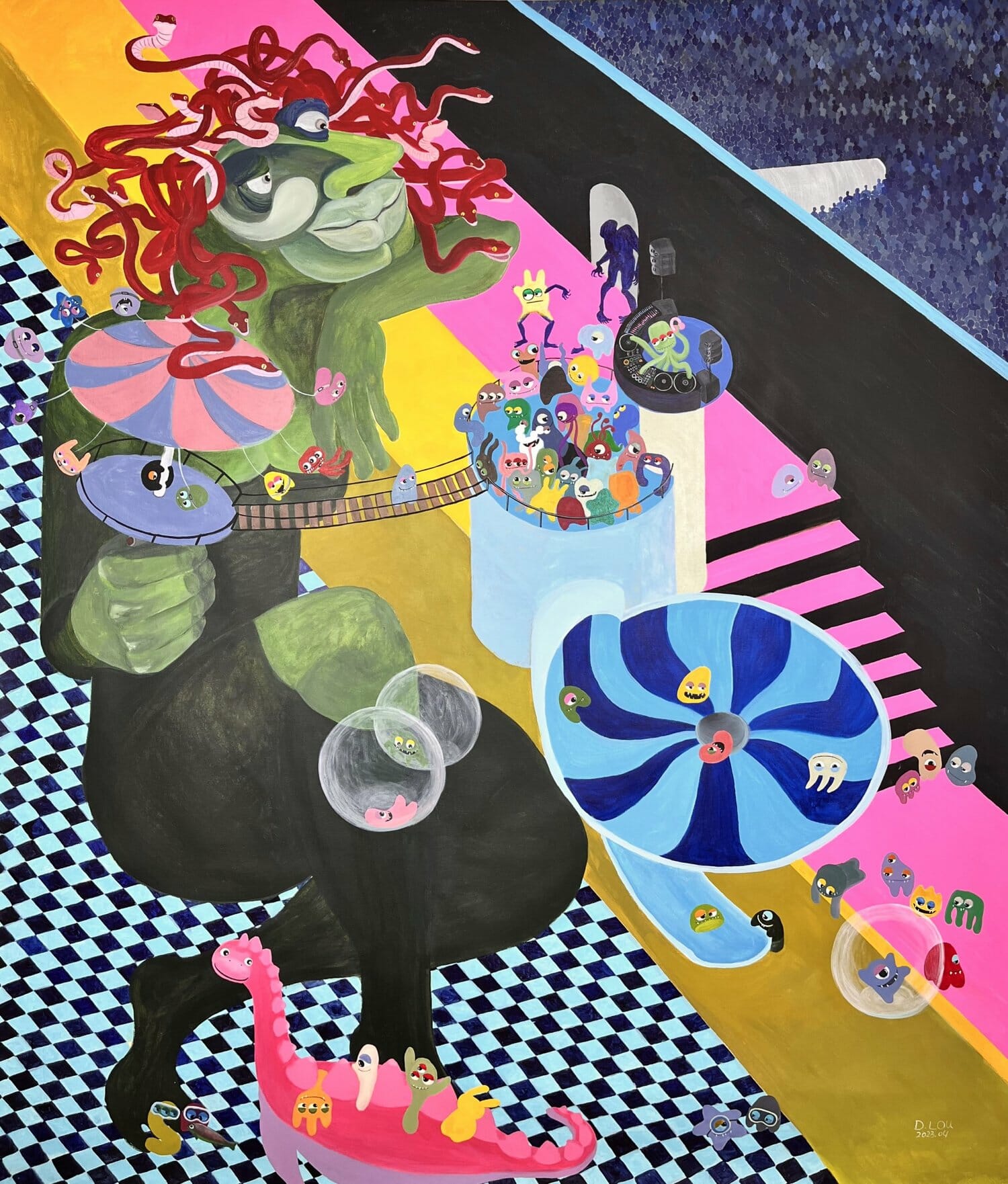
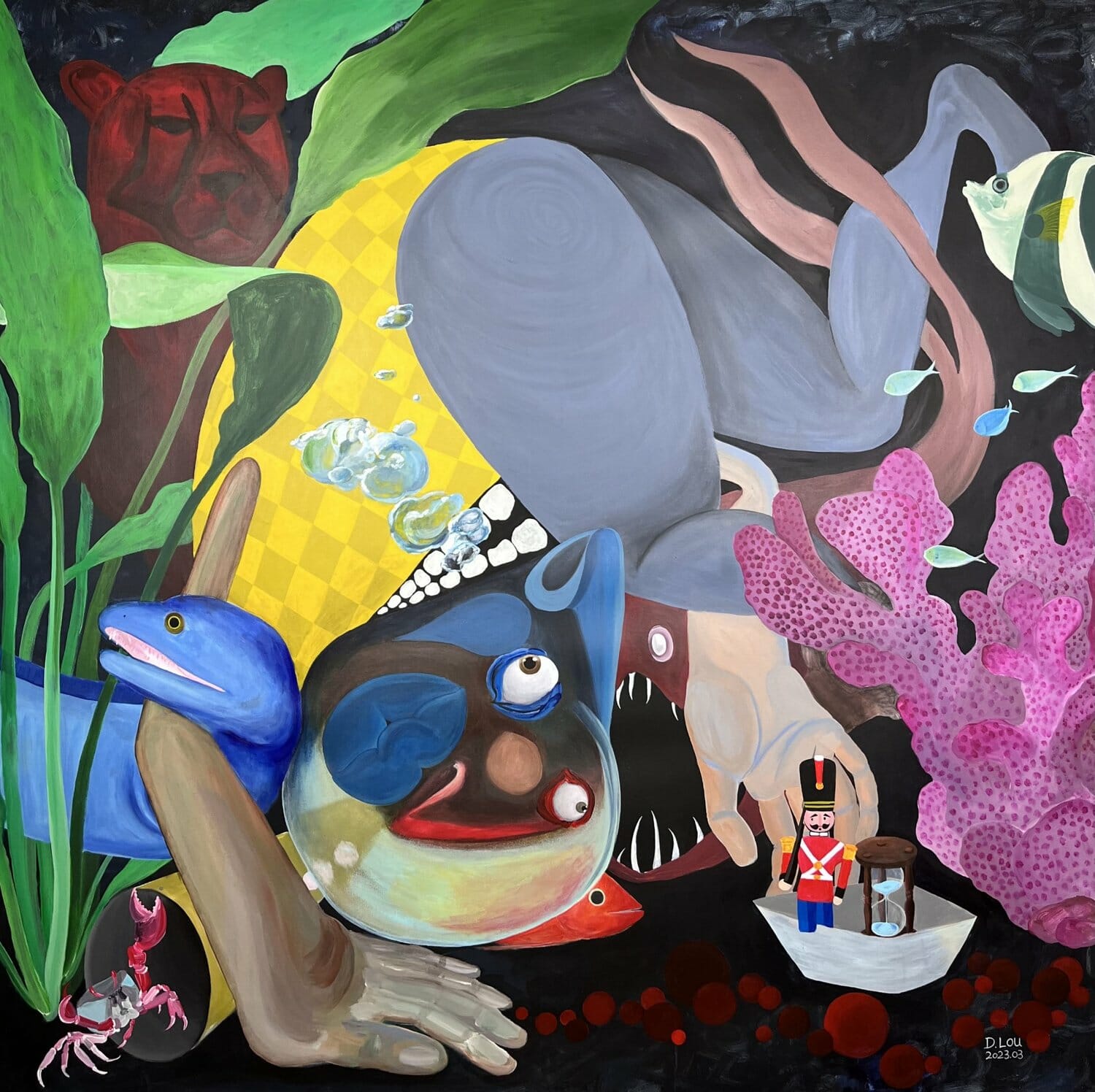
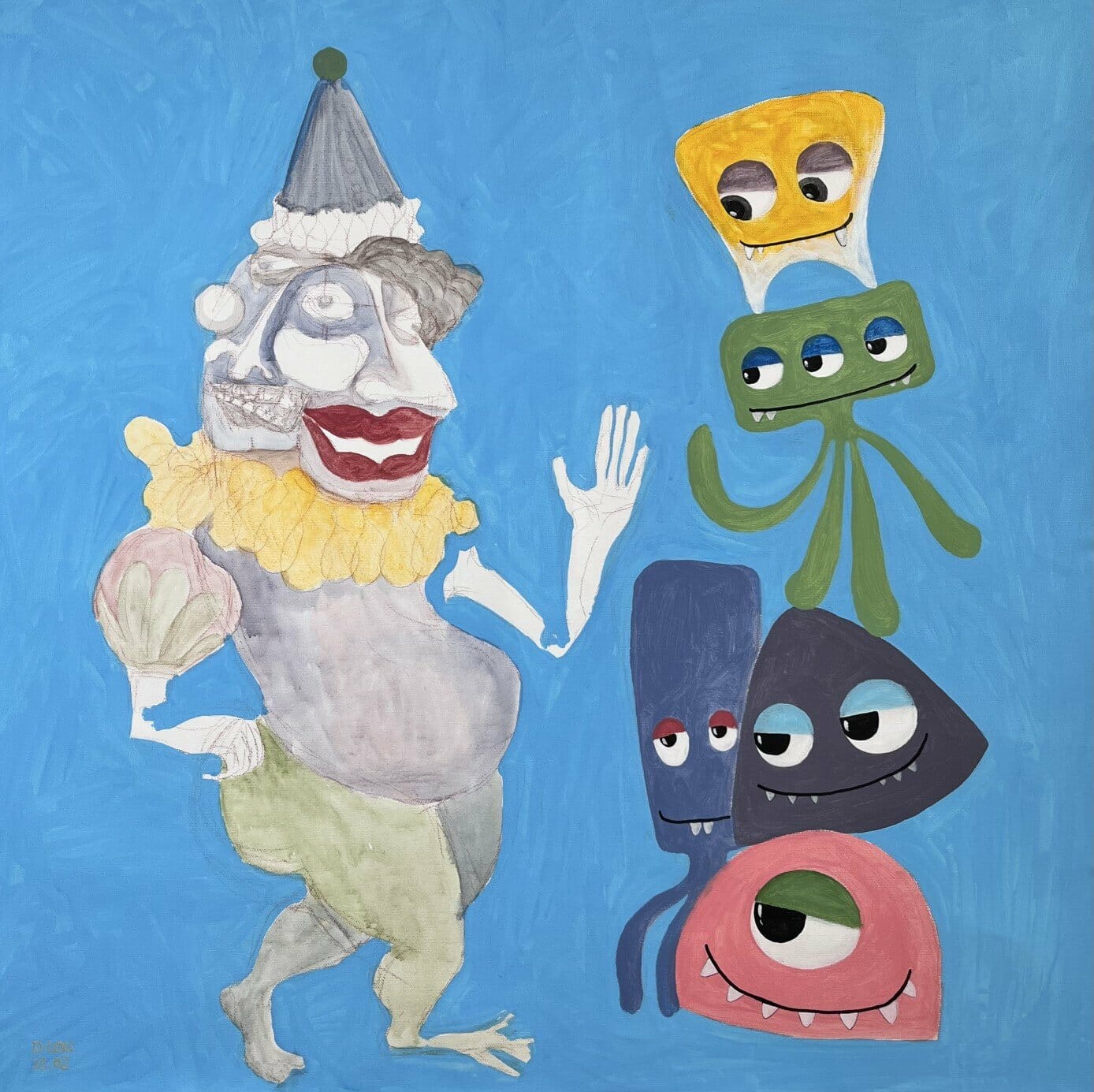
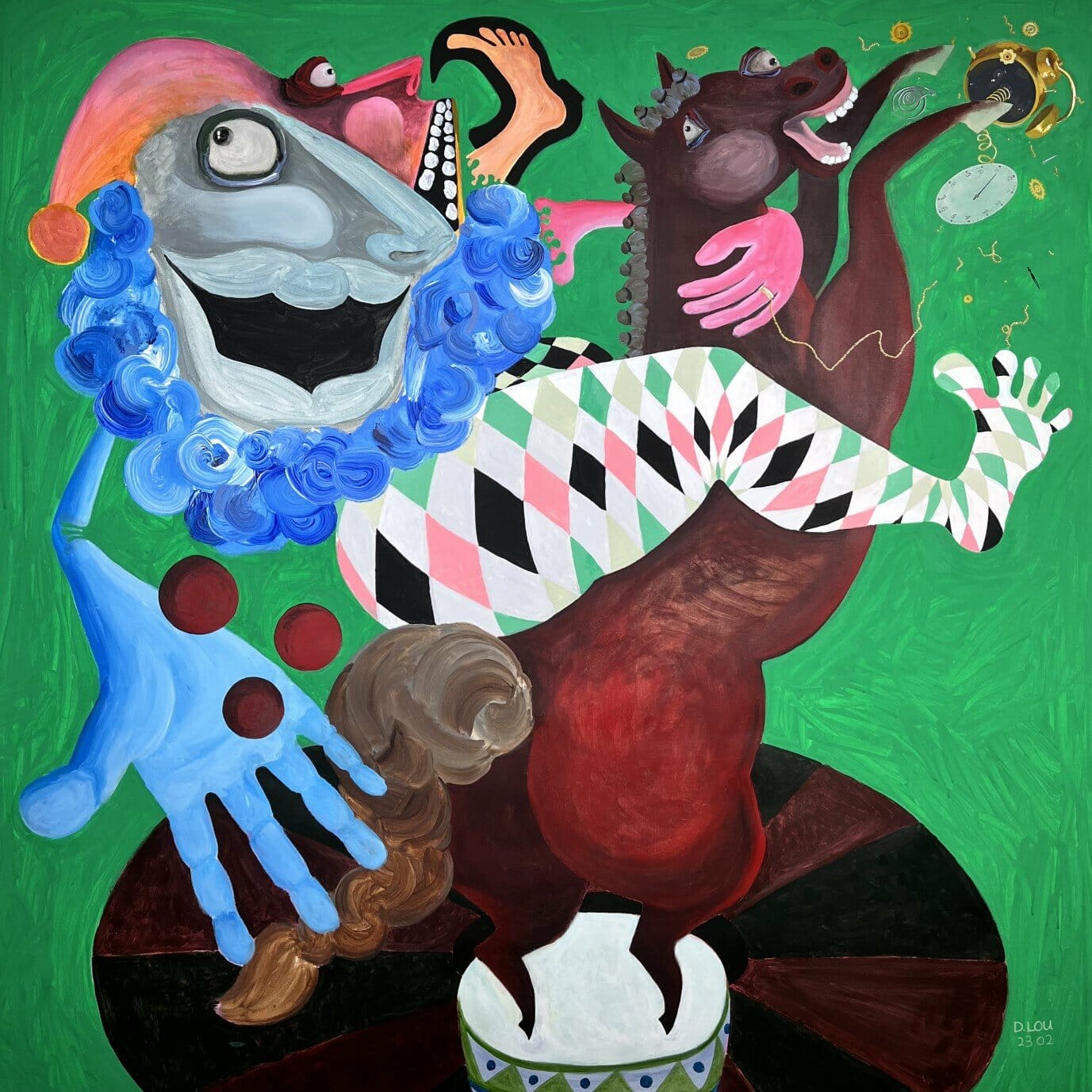
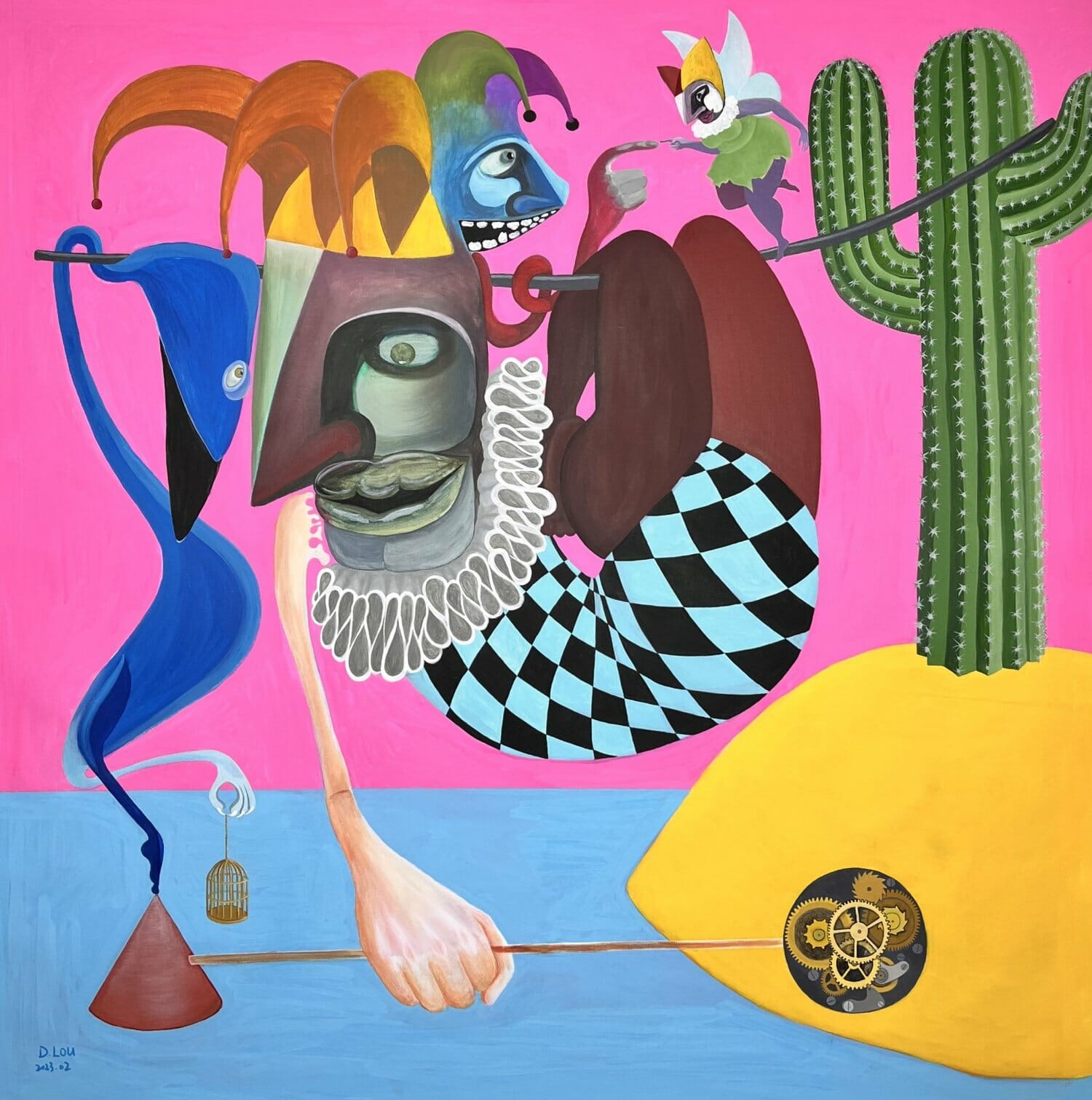
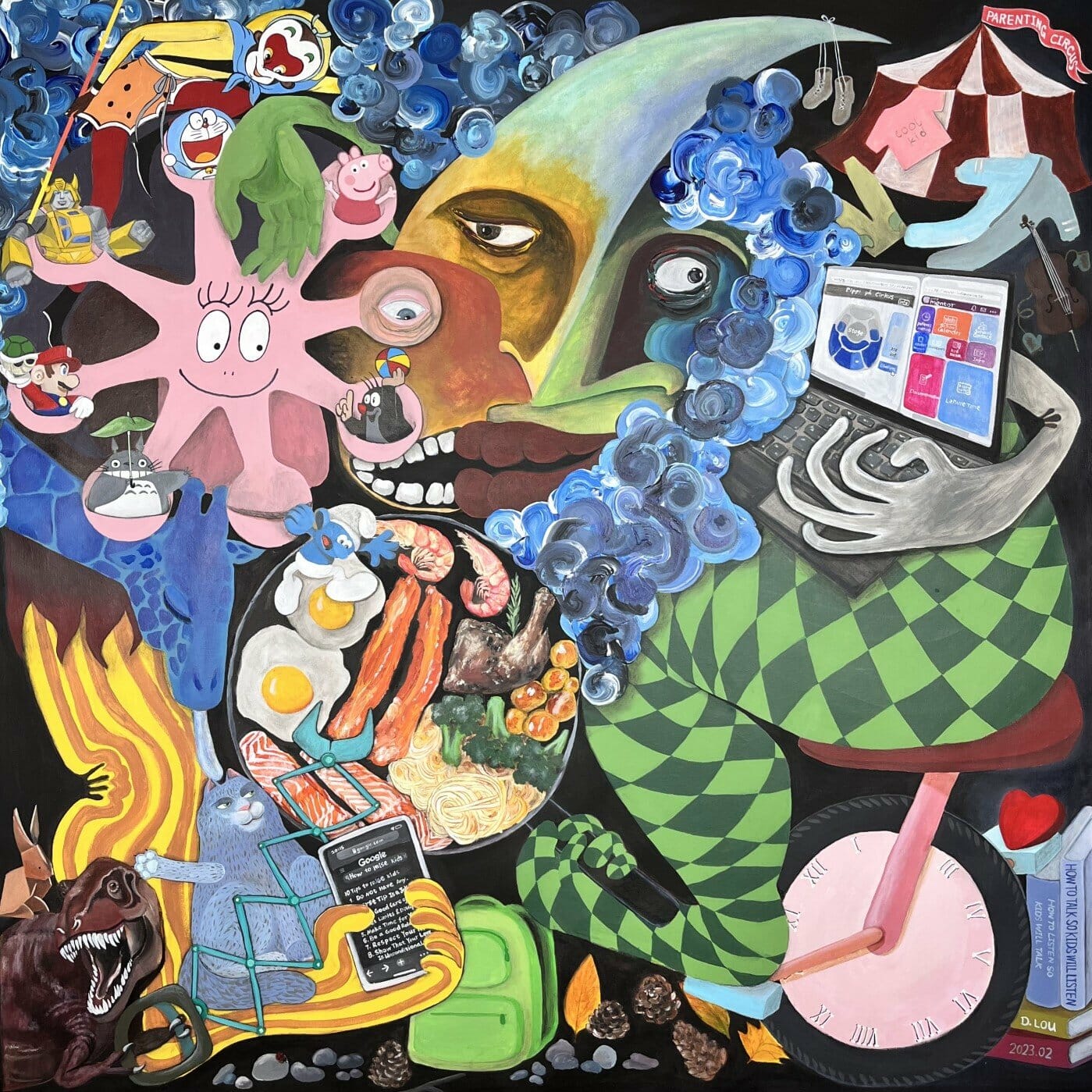
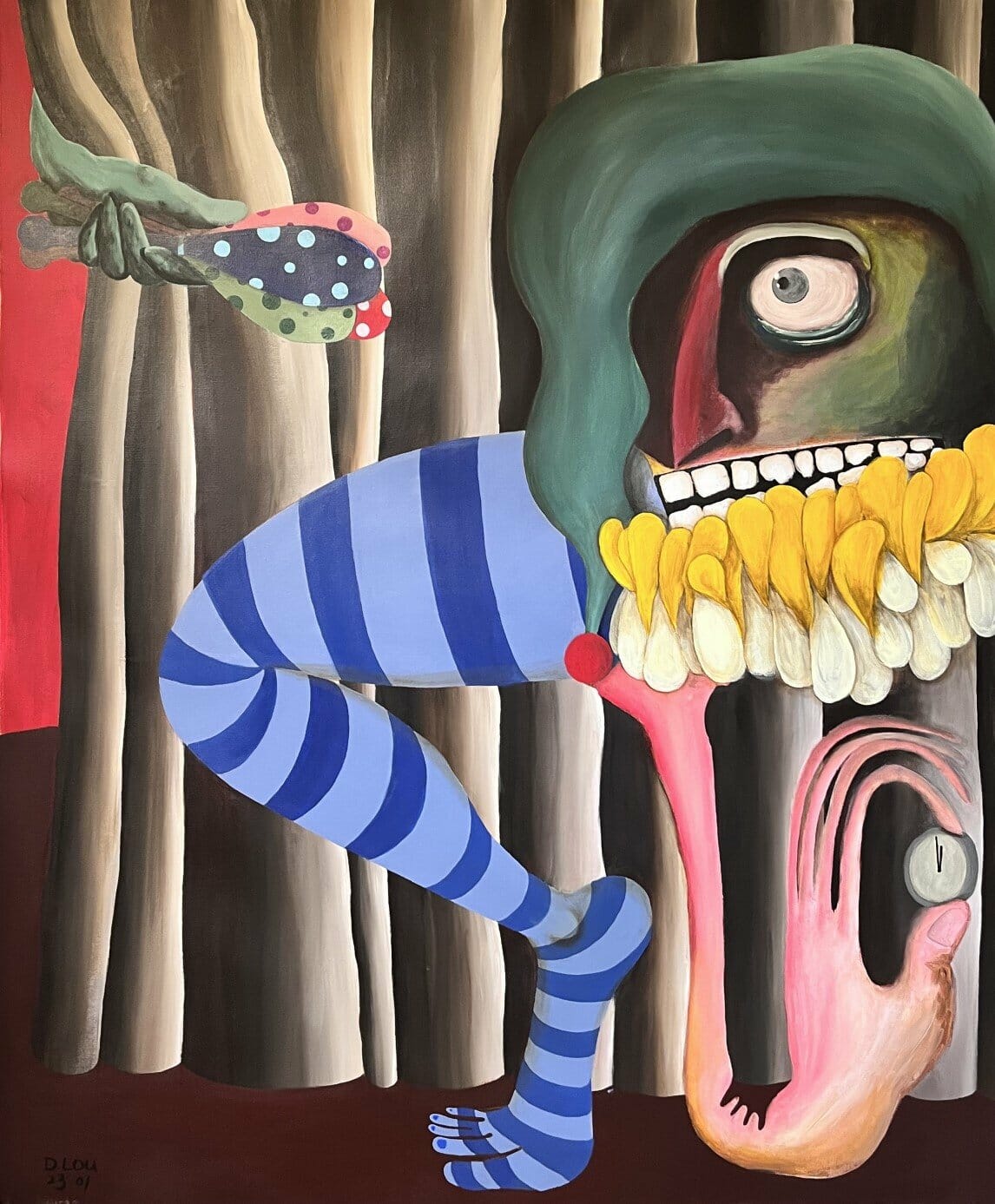
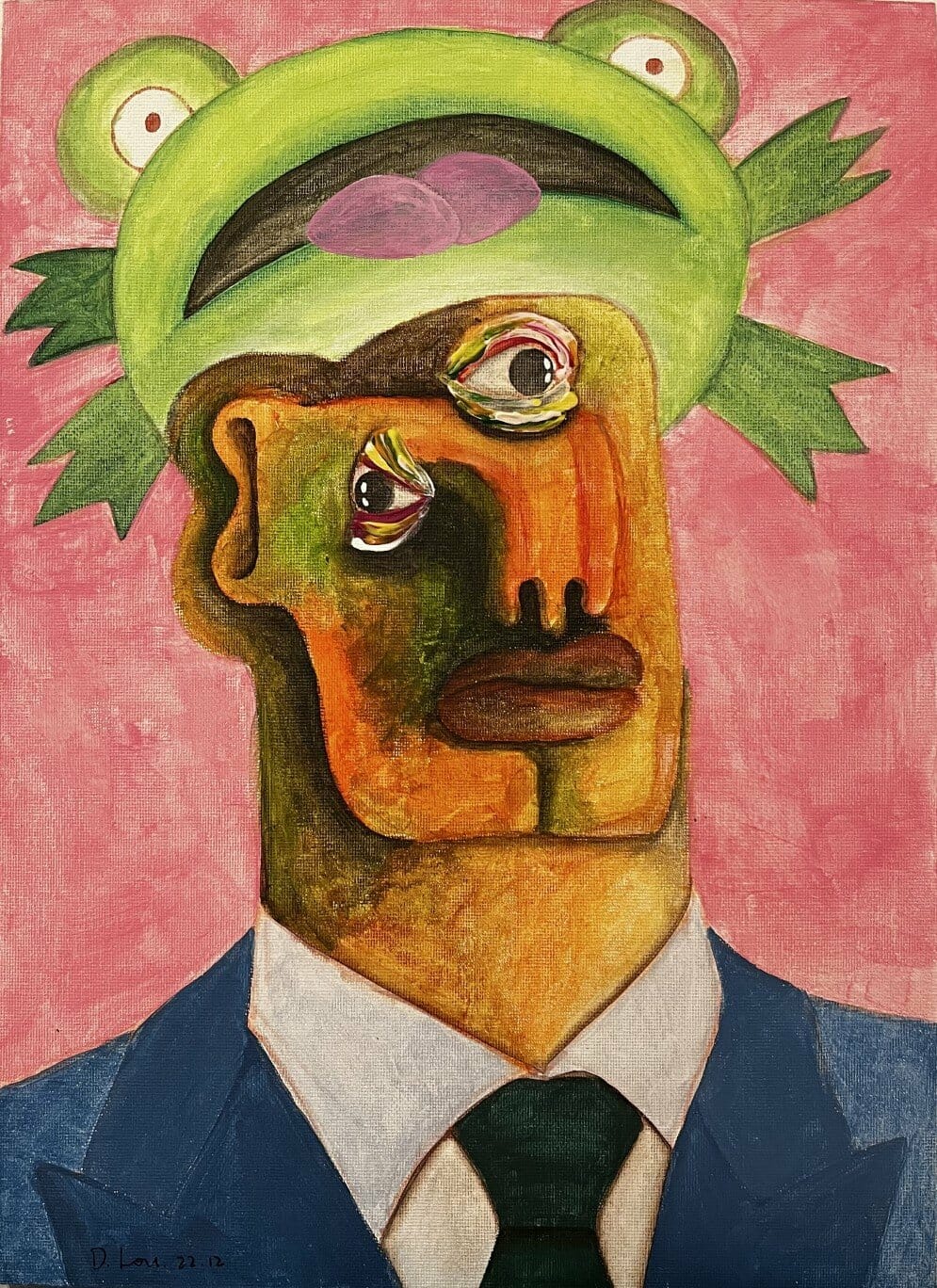
JD: Dear Lou, I am delighted to have you on CAI for a conversation. How have you been?
DL: Thank you for having me at CAI, and I’m honored. I have been good, enjoying a great summer in Stockholm.
JD: Before this interview, you finished two wonderful pieces— Cliché and Hide and Seek. Before discussing those pieces and many more, it is safe to say you have been busy lately. What projects or shows are you working on these days?
DL: Indeed (chuckles), I have been busy preparing for the upcoming Affordable Art Fair Stockholm this fall; I am continuing a series of small paintings called ‘Profile Photo,’ inspired by the business-style profile pictures people use to diminish identities and personalities.
JD: Sounds like an intriguing project. I am looking forward to seeing the finished series. You were born and raised in China before moving to Sweden after graduating from university with a degree in science. Could you talk us through your youth and background and how it has impacted or continues influencing your artistic practice today?
DL: My cultural background and science study significantly impact my art. The influences are more on the mindset than visual, and I summarize them as building me into open-minded, expressive, and critical. Take the most explored theme of my art identity reconciliation as an example; it has precisely these three components: being open-minded to acknowledge that identity is dynamic, being expressive about feelings, and being critical to saving some room for self-awareness. It may sound abstractive, so allow me to expand on how these components have risen.
Being open-minded: I grew up in a mixed background regarding regional, urban, and rural cultures; thus, I came with an open mind at a very young age. I’m from southeast China and lived in three cities early. I spent my childhood in a newly established industrial city where people from all over the country came to work and live. All my friends’ families and neighbors spoke different dialects and loved different food; thus, the culture of the community was very well mixed. Meanwhile, I often stayed long in my grandma’s village for vacations and had a complete set of farming tools but smaller sizes to work in fields. So, I considered myself an individual with multiple identities, even before coming to Sweden. And, of course, moving to Sweden pushed the situation even more complicated.
Being expressive: This part is from my other grandma and my connection with Traditional Chinese Painting. My grandma crafted as a hobby, and she rocked colors. She loved crafting the fabric wall deco inspired by the Peking Opera facial makeup, which was extraordinarily colorful and all about the identity of those opera characters. My grandma made those opera faces but never followed the actual rules, and she just picked up colors upon feelings of the moment. And that’s also how I decide colors in my paintings.
I went to a private Traditional Chinese Painting teacher once a week for two years, around age 11-12. I have forgotten most of the techniques, but the fundamental concept became the guidance of my art practice. Traditional Chinese painting is only about self-expressing and has nothing to do with visual accuracy. Artists in the old days were usually from the literati class and served careers as scholar-officials instead of making art for a living. Thus, the paintings were almost purely about the artists’ thoughts and feelings. They painted particular objects because they saw themselves sharing some qualities represented by them. For example, the red plum blossom symbolizes the spirit of not fearing the winter coldness, the pine tree represents tenacity and unyielding, and the mountains and large rivers symbolize broad minds and lofty aspirations. My practice does not emphasize personal qualities as the traditional painting master did but is similar to their idea that painting is for expression.
Being critical: Studying Life Science led me to a wonderland, and it is a timeless inspiration and valuable training for independent and critical thinking. Sometimes people may exaggerate the gap between science and art due to subject differences. But there is a lot in common regarding practice, such as the need for imagination, creativity, and even discipline in work methodology. The most significant impact of studying life science is to respect that life never stops changing, no single second does the body remain the same, and we are always in the middle of ‘transforming’ and ‘evolving.’ Thus, nothing is entirely right or wrong in how we define ourselves and how much we resist the shifting.
JD: Regarding your visual language, your characteristic and recognizable aesthetic comes very naturally. Deformed figures and stylized objects populate your canvases resulting in very complex pictures. Where did this painterly formula come from?
DL: Conceptually, the complex reflects my view on the changing nature of identity, and visually, I tend to give my paintings a theatric and entertaining narrative to distract the focus and to diminish the weight of the real strugglings, like the safety gap we know when we watch a play: we are there, we see and feel it, but we know that we are not in the scene for real, whatever happened is limited to the stage and never comes after us.
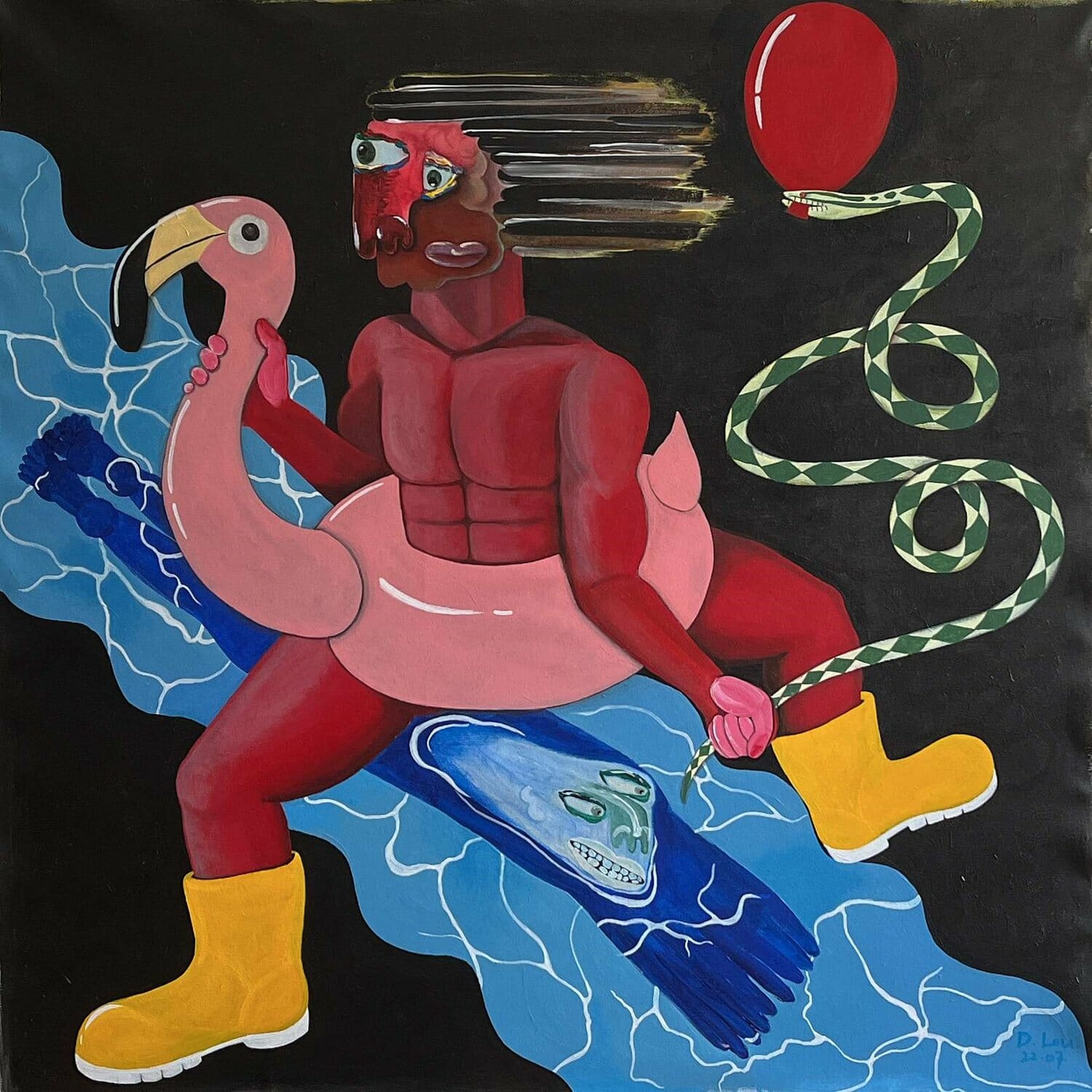
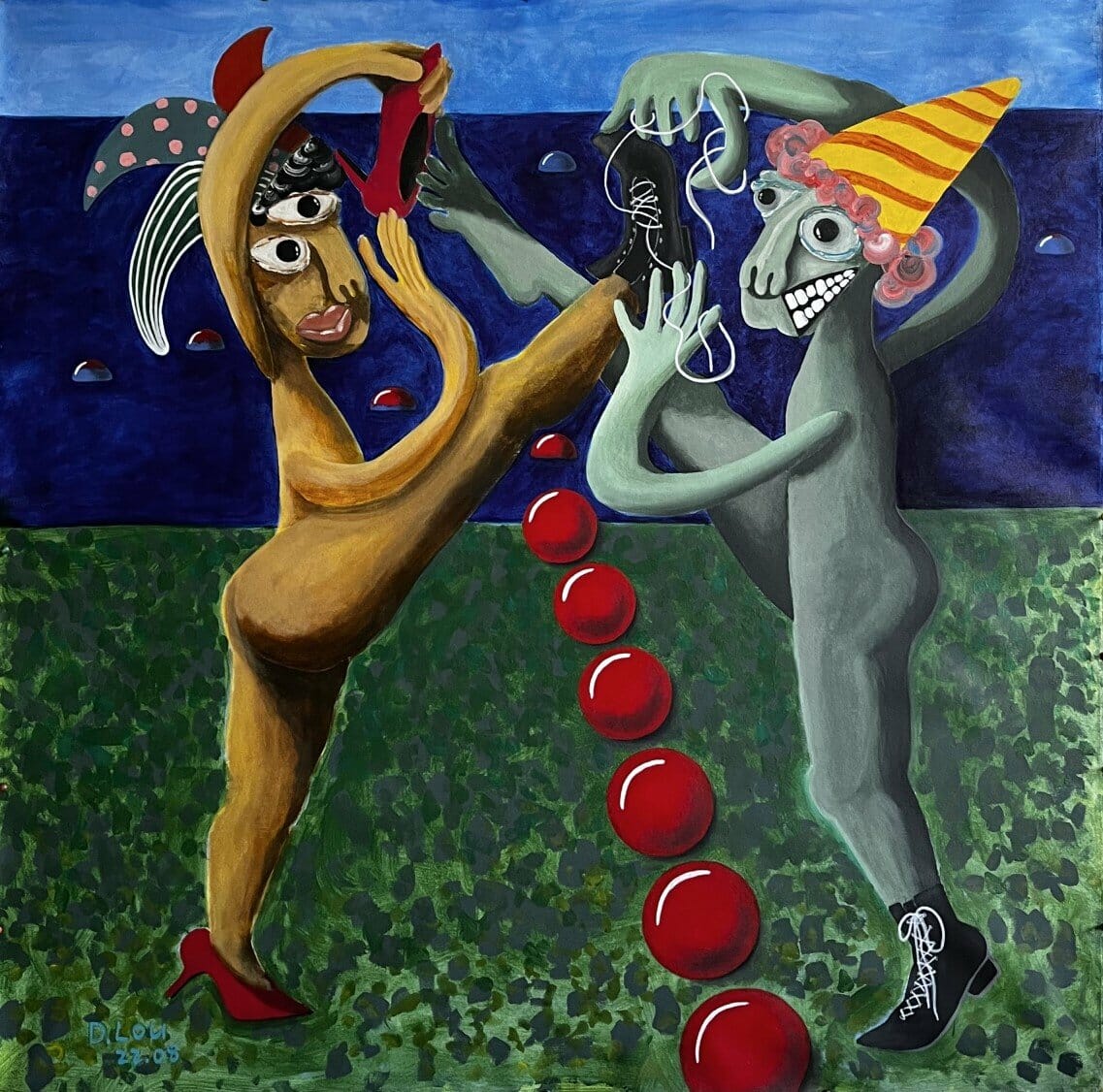
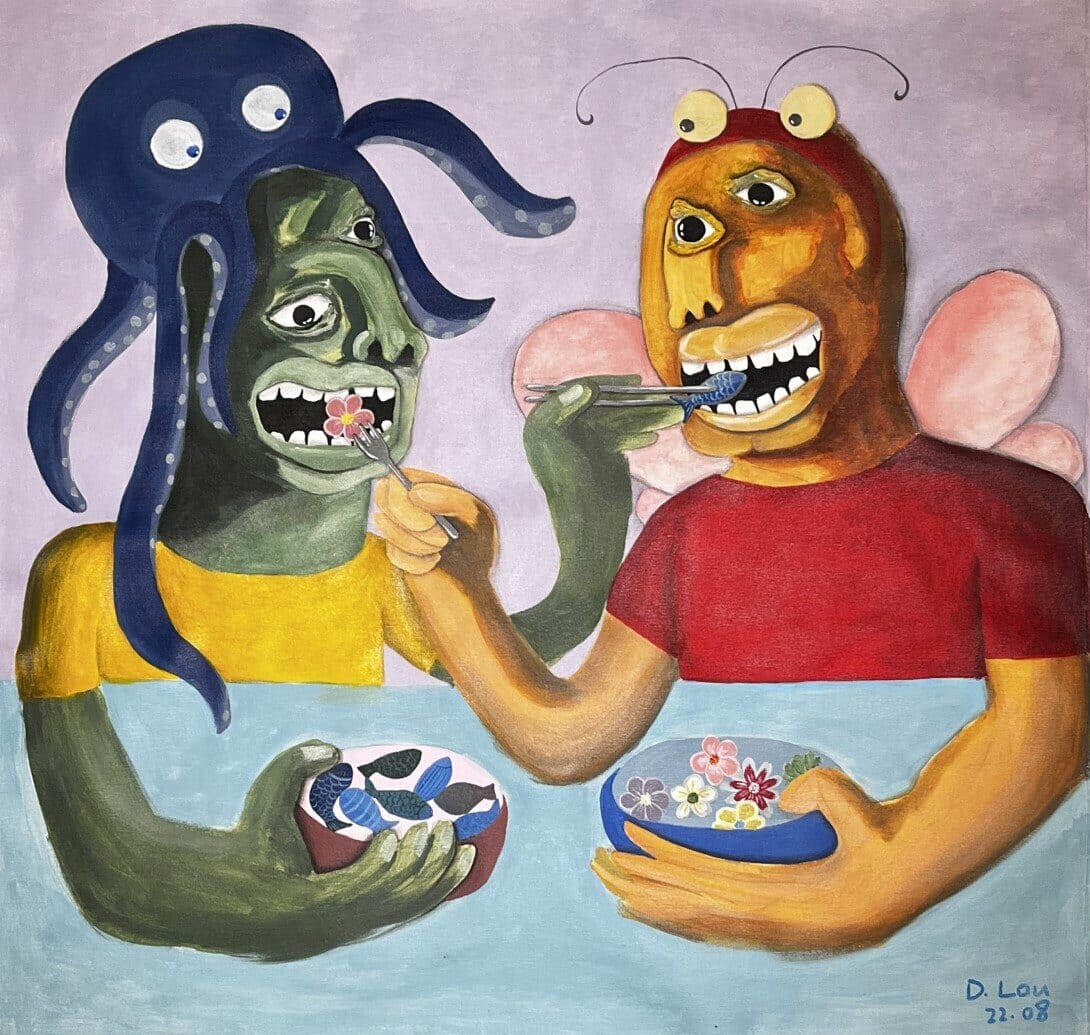
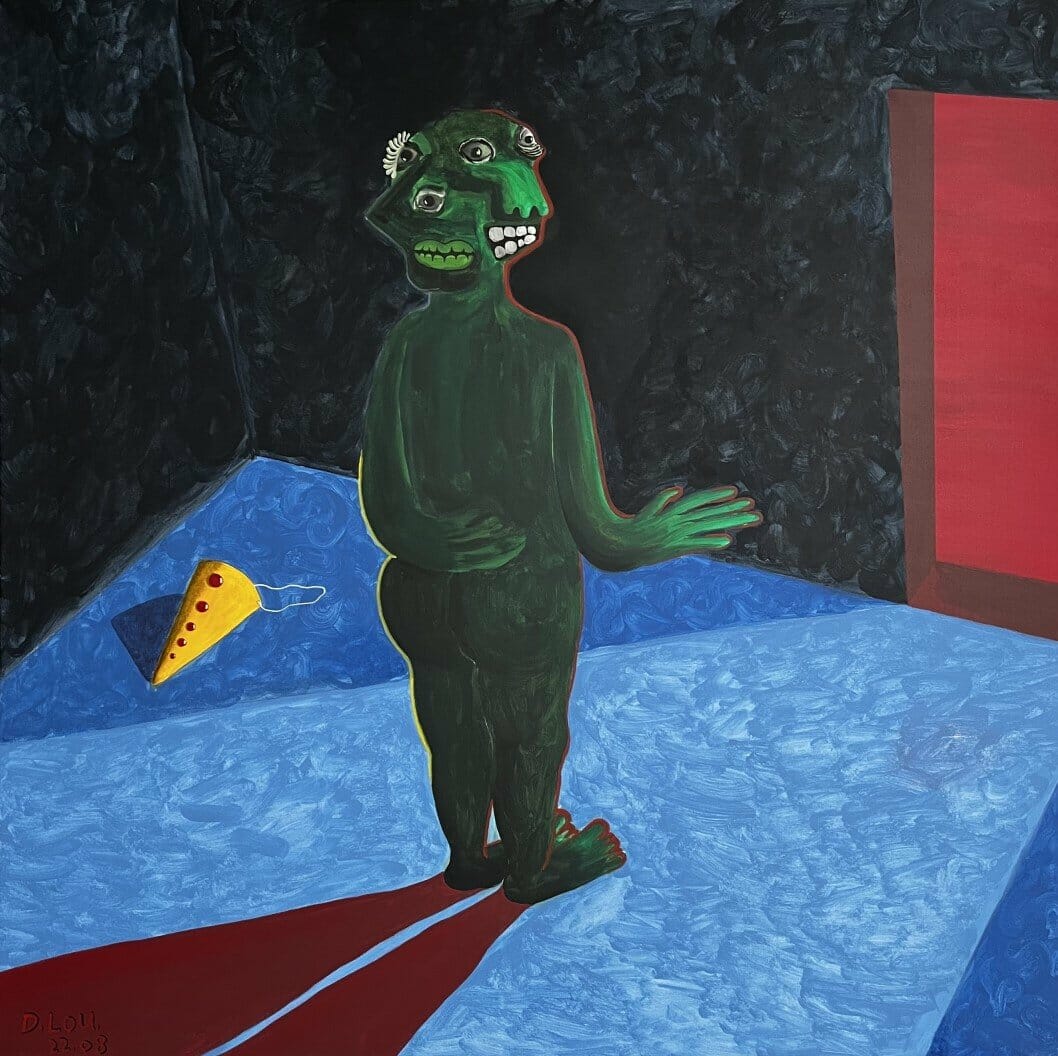
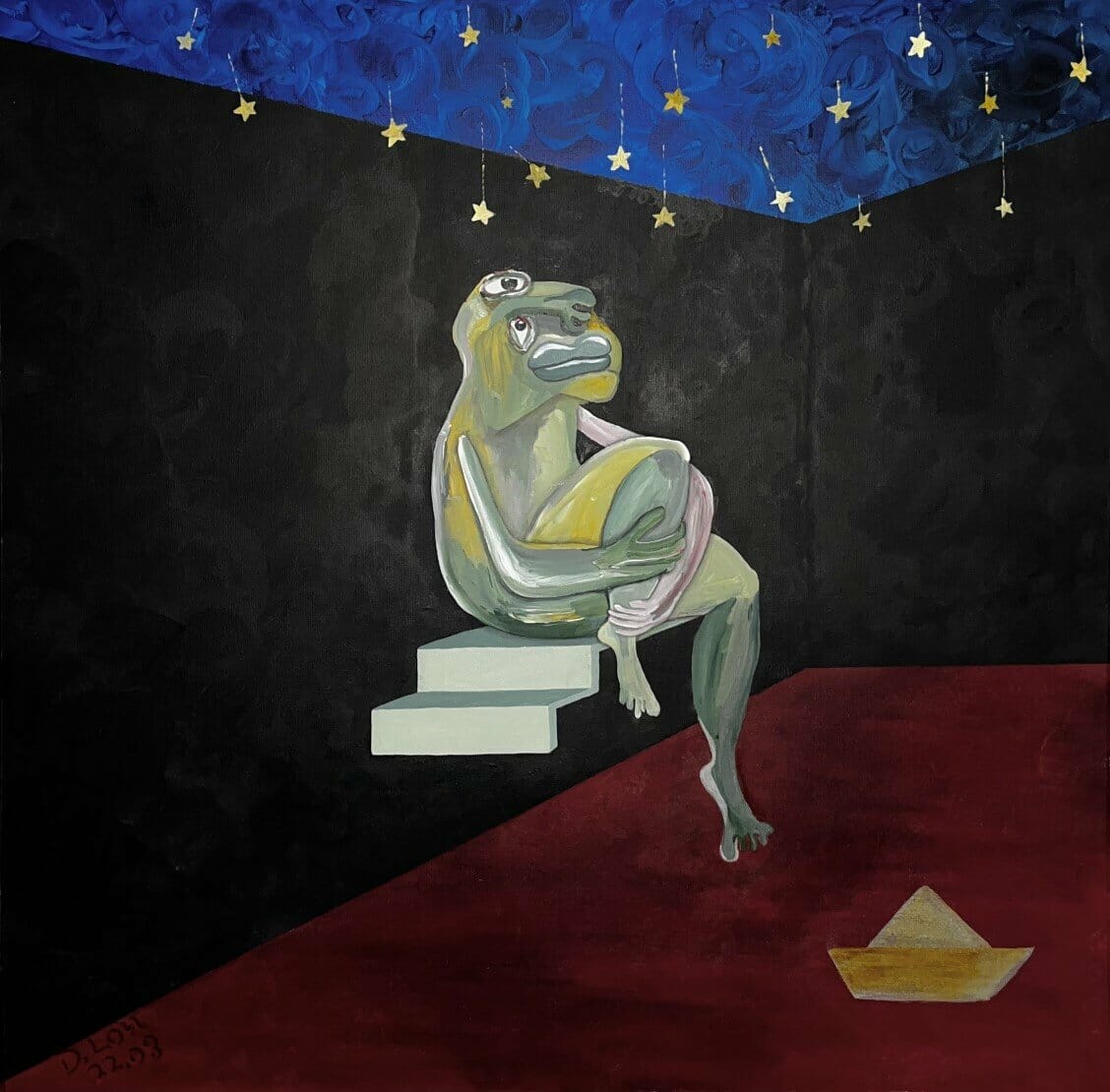
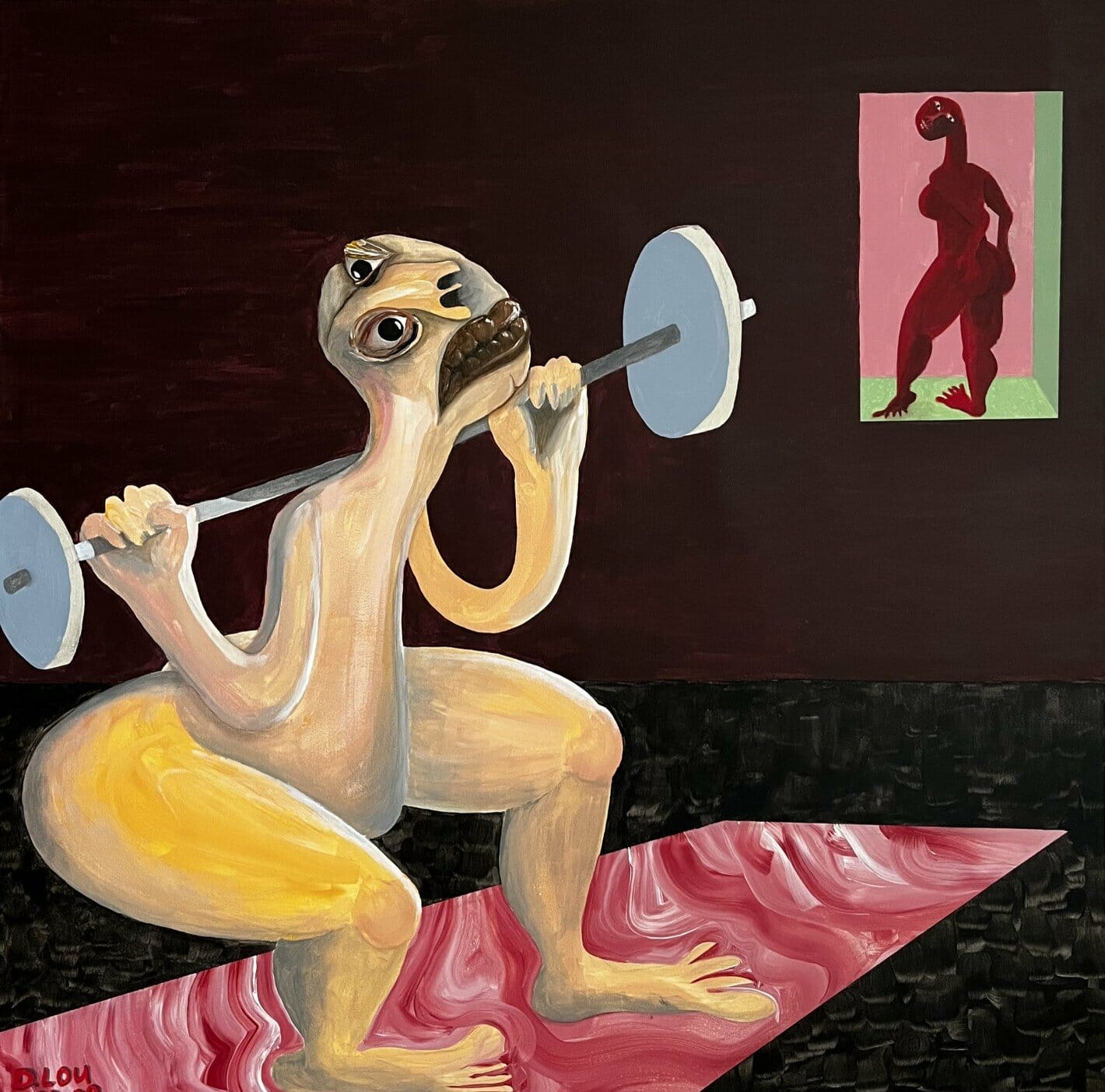
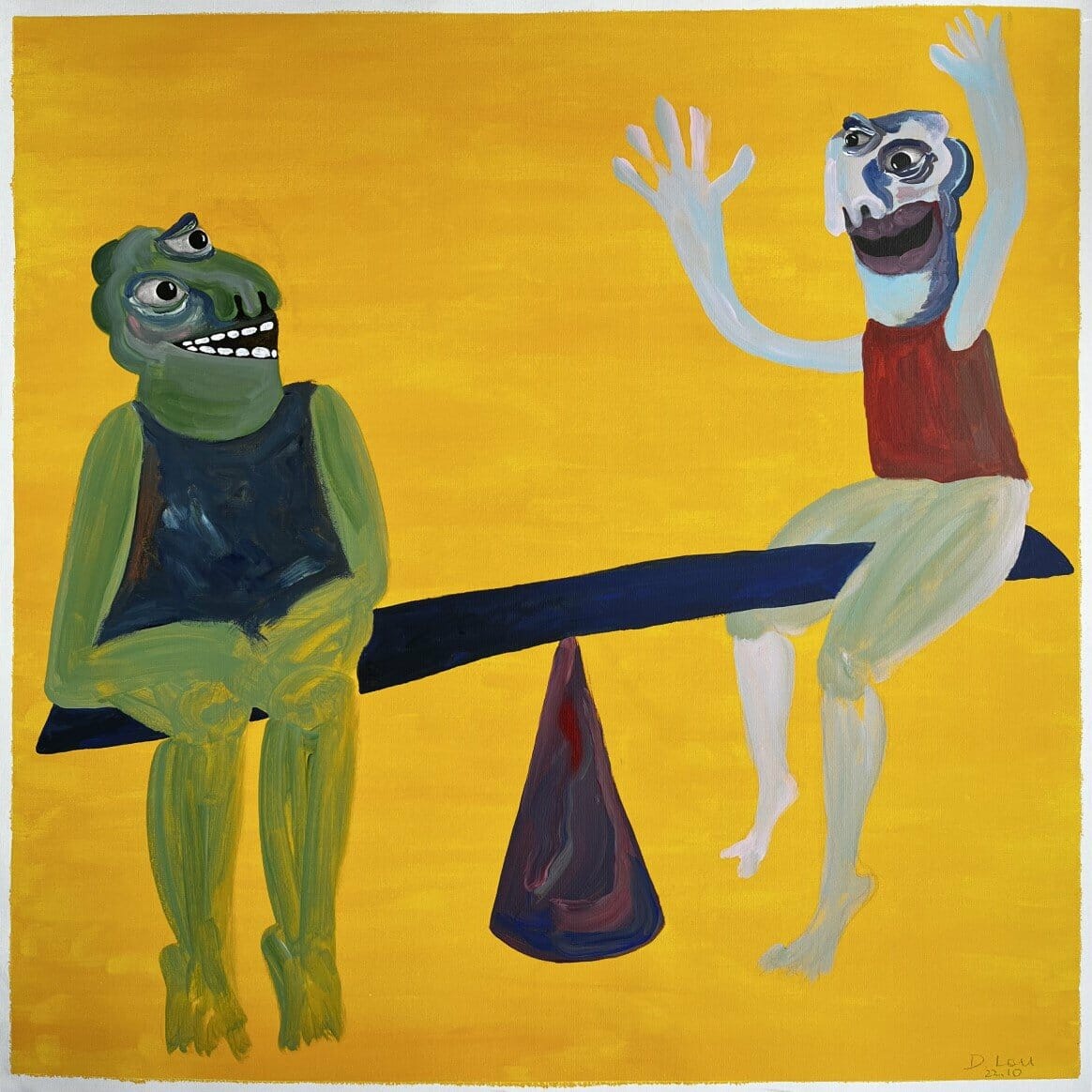
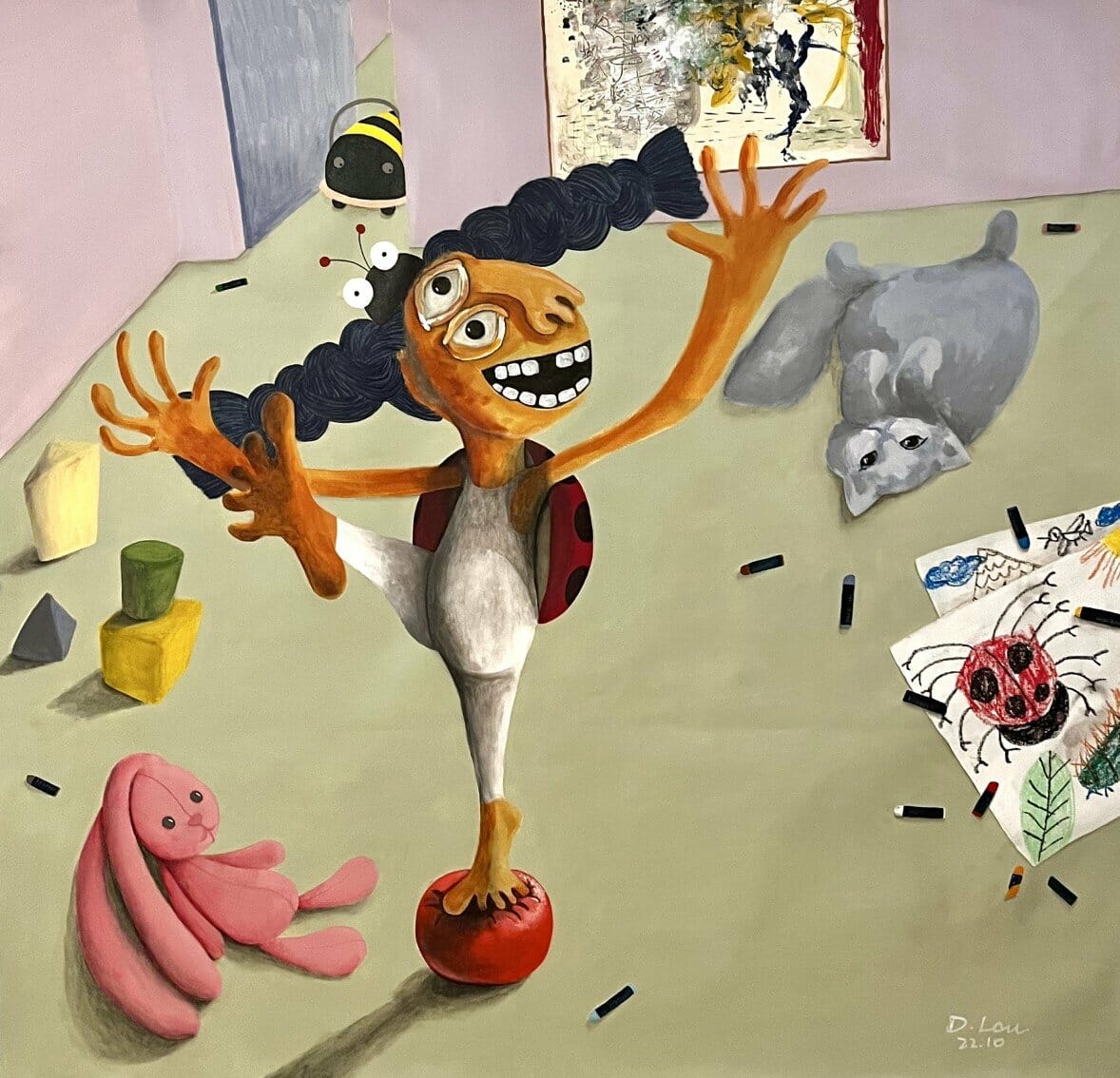
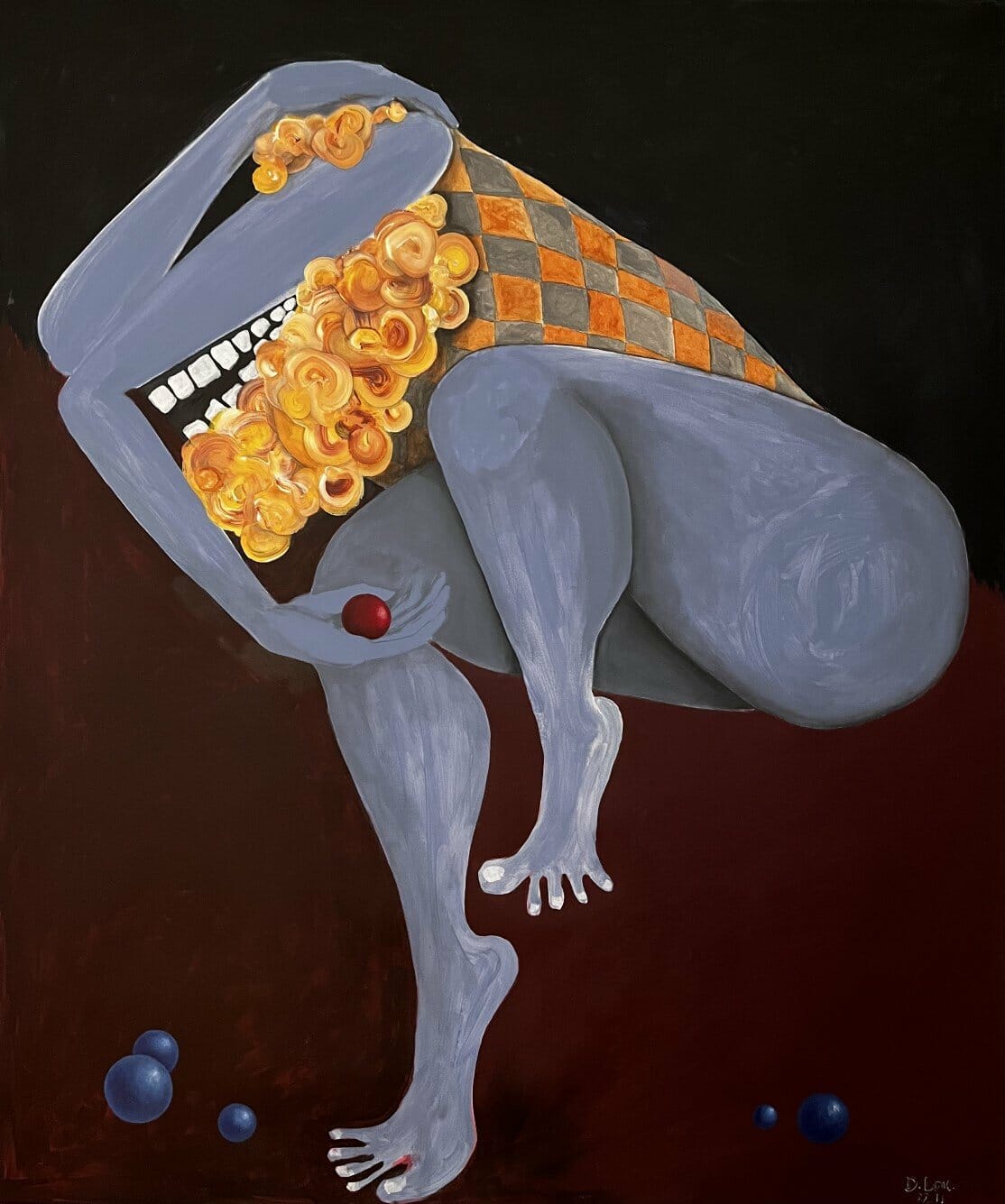
JD: One can find glimpses in your work reminiscent of painters such as Miriam Cahn, Tala Madani, or Trude Viken. Were there any particular artists—contemporary, modern, or Old Masters—that profoundly impacted your work?
DL: So glad that you mentioned Trude Viken because she is an artist I like a lot, and I first saw her works at the Stockholm Market Art Fair 2022, and I was immediately attracted. Regarding the actual impact, I would say, Henri Matisse, Le Corbusier, and David Hockney are the artists I love the most because they are excellent at playing colors like conducting a symphony: vibrant and elegant. Especially Le Corbusier, probably my favorite artist, who is commonly recognized as a master in architecture, but I have dreamed of having a painting of his. His paintings are full of colors and shapes, yet very structural and balanced, as harmonious as a beautiful modern building. And just like him, I’m also a fan of filling canvases with prominent figures.
JD: He is a surprising artist to admire, and I can only state that I agree; Le Corbusier’s painterly practice is too often overlooked and undervalued as his tremendous contribution to modernist architecture casts a great shadow over it. Could you please expand on or summarize your works’ general subject matter or intention?
DL: One is identity reconciliation, as mentioned earlier, and another is emotions and struggles. Everyone faces some of those problems at a particular stage, and I want to communicate them with the audience to exchange thoughts and feelings.
JD: Recurring concepts are change, inner conflicts, different identities, and notions of self-awareness and acceptance. Are there specific motifs symbolizing these concepts? Personally, I am very much intrigued by the recurrence of eyes, limbs, fabric patterns, clocks, animals, and fantasia creatures. Where do they come from, and what is your relation with them?
DL: Great question (laughs), and I can talk for three days about this! You are insightful about the recurring motifs. I feel very strongly for them and must make them that way. Let’s start with the eyes. They are hardly in calmness in my paintings because the person is so overwhelmed, and the skin surrounding the eyes looks so crumpled because my eyes look like that when I am exhausted. About the limbs, I am a big fan of strong legs because they stabilize the body and symbolize vigorous vitality; they make the struggling figure feel a bit of safety and sure about themself at the moment. Clowns inspire the fabric patterns, and the figures all carry some clown features. Clowns make fun of themselves, hide under loud makeup and outfits, and people unsure about their identities tend to cover themselves up.
The clock comes from my obsession with the idea of getting the lost time back after my divorce four years ago. Animals are there for two roles, friends and the representatives of natural law, and they usually symbolize the objective elements in a story that one has to acknowledge as facts and not avoid what needs to be done. The fantasia creatures are the characters I created about nine years ago during another difficult time. They were the only thing that appeared in my head when my mind got blocked, and the only thing I could think of was to make them real, like plush toys. So I did, one after another, and that was how I healed. I named them ‘Shy Monsters,’ and they were creatures with sharp teeth, but kind, calm, playful, naughty, also a bit shy, anything but sad or depressed, as the bright features in humanity that anyone has somewhere inside, and critical in getting oneself through tough times.
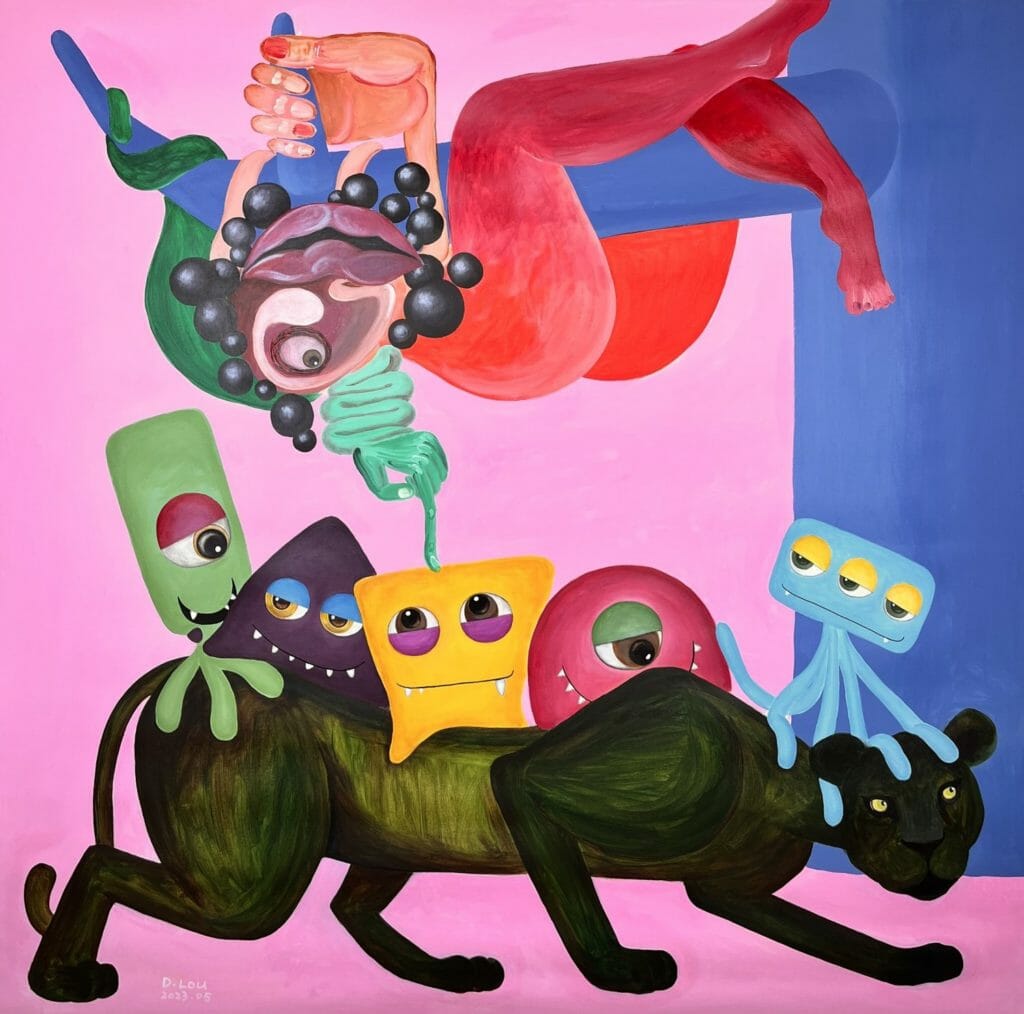
JD: Let’s get back to your two latest pieces. In Hide and Seek, we encounter those fantasia creatures riding a feline creature. What is your interpretation or intention with this particular picture? Do you prefer an open reading for the viewer?
DL: I love to share the concepts but avoid going into detail because I prefer to leave some space for the audience to finalize the art with their perspectives. And it’s rewarding to me if the audiences see themselves or somebody they can relate to in the paintings. My concept of this piece is about self-helping, and the creatures on the panther are the ‘Shy Monsters,’ as I mentioned before. The creatures look for the person hiding in the tree, and the setting seems like playing; thus, they are not seeking with anxiety because they know the person is not gone for real, as the person always intends to be found. After all, the person never really wants to be without them, so the person hides low in the tree and tickles one of the creatures in the head with a finger.
JD: With your latest piece Cliché, we encounter a depiction of an absurd narrative that could be read as a metaphor. A clock fighting with its own pointers, a hand holding a human heart, and absurd expressions that actually feel very familiar. A painting filled with humor but also wit. Could you please expand on these visual metaphors and absurd narratives in this piece and throughout your oeuvre?
DL: Thank you very much for the interesting introduction to the painting. When I created this painting, I put three layers of thoughts.
The first layer is the narrative of the time effect on building deep bonding: the clock hijacks the person with its pointers, making the time uncountable, indicating endless. The individual gives away the heart symbolizing the established deep bonding. The second layer is the other face of the same person laughing at the action of giving the heart because the time effect on deep bonding is such a cliché, and nobody should take it seriously any longer. There is no need to surrender your heart just because much time is spent. The third layer is: it is also a cliché to say that the time effect on deep bonding is a cliché. And it applies to many other things labeled as ‘cliché’ too, and being tagged as such diminishes the importance of them actually being the facts.
And the audiences are welcome to add or edit the layers as they like or completely rewrite them in their minds.
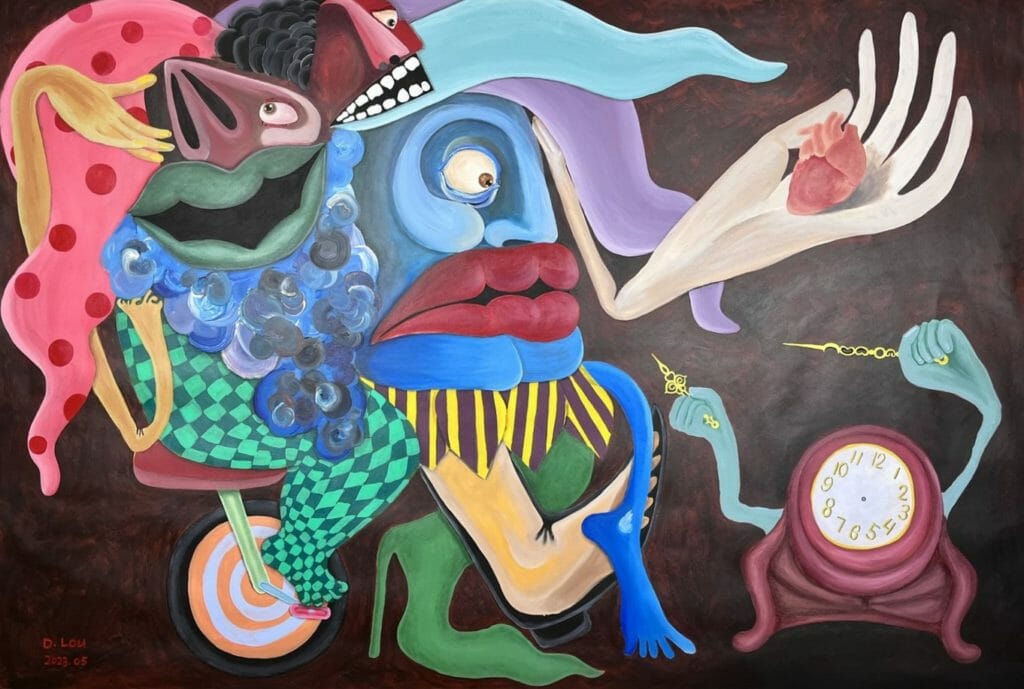
JD: You have been exhibiting more frequently over the past few years. Do you have any specific shows in the fore you want to share with our audience and where we can find your works in real life in the foreseeable future?
DL: Absolutely. I have several upcoming group exhibitions, and museum shows in Sweden or internationally in summer and autumn. I am particularly excited about the group exhibition in August-September at ALMA Stockholm, where I will show some large paintings from this year. And in October, more of my artwork will be exhibited at the Affordable Art Fair Stockholm. I can’t wait to meet art lovers at these local events.
JD: Thank you so much for this wonderful chat. I am looking forward to seeing more of you in the future. Wishing you all the best, and stay in touch.
DL: Thank you for all the great questions and a fun discussion, and I wish you a lovely summer.
For more information, please consult Daohua Lou’s website here.
Last Updated on June 26, 2023

A Studio Visit During the La BIBI Residency
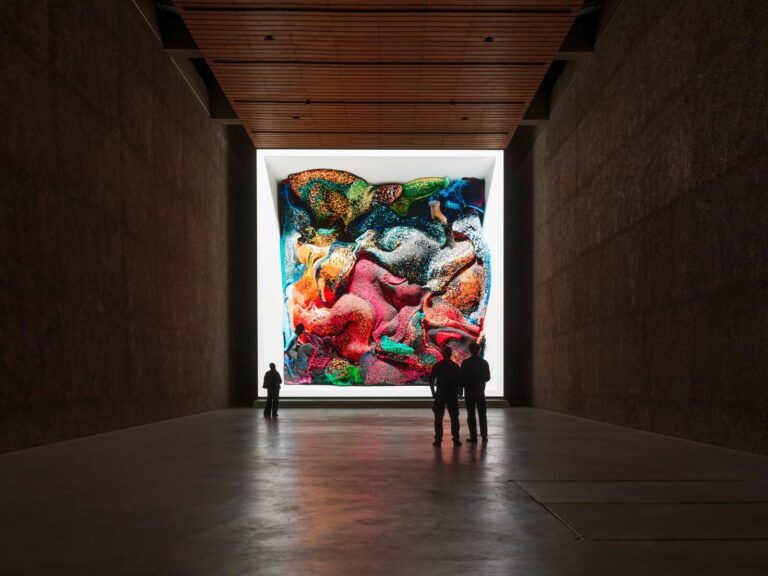
A Reasoned Anthology